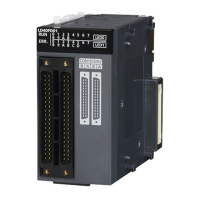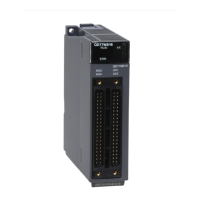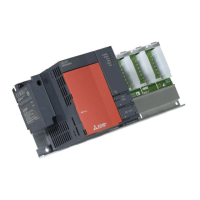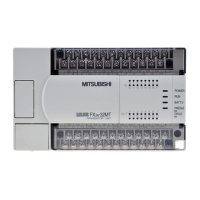152
13.2 Troubleshooting by Symptom
13.2.1 Troubleshooting on CSV file output
The following are examples of incorrect display of CSV file outputs and how to troubleshoot the problems.
13.2.2 Troubleshooting on SD memory cards
The following are examples of SD memory card problems and corrective actions.
Symptom Cause Action
Time data in the Date column are
incorrect.
Clock data setting was changed
after start of the data logging.
Do not change clock data of the CPU module during execution of the data
logging function. ( Page 73, Section 6.8 (12))
The number in the Index column is
reset to 1.
Data missing has occurred.
To prevent data missing, take any of the following actions.
• Increase the sampling interval. ( Page 99, Section 8.4.4)
• Decrease the number of sampled data. ( Page 101, Section 8.4.5)
• Increase the buffer capacity. ( Page 115, Section 8.5.2)
• Decrease frequency of file switching. ( Page 109, Section 8.4.10)
Symptom Cause Action
When the SD memory card is
installed with the power on and the
SD memory card lock switch is slid
down, the SD memory card LED
does not turn on.
The file system on the SD memory
card is corrupt.
Power off and then on or reset the module, and diagnose the condition of the SD
memory card. ( Page 138, Section 9.1 (1))
If the problem is not solved by the above action, format the SD memory card.
When the SD memory card is
accessed from a peripheral device
such as a personal computer, the
size of the accessed file is 0 byte. Or,
the file is corrupt and not accessible.

